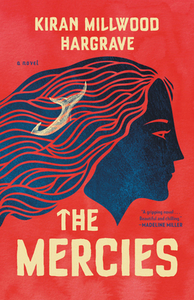You need to sign in or sign up before continuing.
Take a photo of a barcode or cover
challenging
dark
emotional
sad
tense
fast-paced
Plot or Character Driven:
Plot
Strong character development:
Yes
Loveable characters:
Yes
Diverse cast of characters:
Yes
Flaws of characters a main focus:
No
emotional
informative
reflective
sad
tense
medium-paced
Plot or Character Driven:
Character
Strong character development:
Complicated
Loveable characters:
Yes
Diverse cast of characters:
Yes
Flaws of characters a main focus:
Complicated
I wasn't blown away by anything here, it felt like it kept bumping up against almost interesting ideas but never really bringing any of them home. It felt oddly unmoored from its historical setting, despite the content being very much rooted in a particular time period. I found the sister in law the most interesting character, but she was shunted off to the side for two lukewarm leads.
challenging
emotional
inspiring
reflective
sad
tense
slow-paced
Plot or Character Driven:
Character
Strong character development:
Complicated
Loveable characters:
Complicated
Diverse cast of characters:
Complicated
Flaws of characters a main focus:
No
I've just finished The Mercies by Kiran Millwood Hargrave. It's a brilliant book and is based on true life events of witch trials in Norway in 1600s.
The story starts with a storm which takes nearly all the island of Vardø's menfolk while fishing and how the women have to take up the men's work. There's already a clear division between practical, strong women and Lula Dean types who are full of hypocrisy.
I won't spoil any more of the plot but life takes a drastic turn when a Scottish emissary of the king is sent to "clean up the place" with a new, highly naive wife in tow.
In reality this was about making indigenous people obey religious reforms and give up their land and influence - all in the name of religion. Apparently there were fifty two trials like the one in the book leading to the murder (let's call it what it is) of 91 people: 14 men and 77 women!
The author said she focused on "not with the trials themselves (although there is one in the book), but with the conditions that make such things possible."
Against this background it's also a story about love, forbidden love, and friendship.
My first book for May has been epic. 9/10
The story starts with a storm which takes nearly all the island of Vardø's menfolk while fishing and how the women have to take up the men's work. There's already a clear division between practical, strong women and Lula Dean types who are full of hypocrisy.
I won't spoil any more of the plot but life takes a drastic turn when a Scottish emissary of the king is sent to "clean up the place" with a new, highly naive wife in tow.
In reality this was about making indigenous people obey religious reforms and give up their land and influence - all in the name of religion. Apparently there were fifty two trials like the one in the book leading to the murder (let's call it what it is) of 91 people: 14 men and 77 women!
The author said she focused on "not with the trials themselves (although there is one in the book), but with the conditions that make such things possible."
Against this background it's also a story about love, forbidden love, and friendship.
My first book for May has been epic. 9/10
The Mercies was my local book club pick and I was really excited to read this one as I had seen a lot of people reading it on my social media and let’s be honest, the book is stunning. I actually had no idea what the book was about until I came to read it and that’s not often the case when books are so heavily discussed on Instagram and Twitter so that was really refreshing!
The Mercies is set in Finnmark, Norway, 1617 and follows the story of the aftermath of a storm which kills all the men on the island. With the men wiped out, the women of the tiny Northern town of Vardø must learn how to fend for themselves. Yet three years after the storm, the sinister Absalom Cornet arrives in Vardø from Scotland, where he burned witches in the northern trials. He brings with him his young Norwegian wife, Ursa, who is both heady with her husband's authority and terrified by it. In Vardø, Ursa sees something she has never seen before: independent women. But Absalom sees only a place untouched by God and flooded with a mighty evil.
As Ursa and Vardø citizen, Maren, are pushed closer together they become drawn to one another in ways that surprise them both, but the island begins to close in on them with Absalom's iron rule threatening Vardø's very existence.
As a history nerd, I find historical fiction to be one of my favourite genres but I have to say, I have read a lot of the same sort of historical fiction stories over the years. Yet with The Mercies, I found myself reading a story that’s very familiar over in the UK (especially in the North of England) but one that I (foolishly) didn’t realise actually spread across multiple European countries with Norway being one of the worst hit countries for witch trials. The story of The Mercies was inspired by the real events of the Vardø storm and the winter of 1662-1663 which was one of the biggest witch trials in Scandinavia. Thirty women were put on trial, accused of sorcery and making pacts with the Devil. One was sentenced to a workhouse, two were tortured to death, and eighteen were burned alive at the stake. This was arguably because Vardø was the home to the majority of the Sámi people; indigenous Finno-Ugric-speaking people inhabiting Sápmi, which today encompasses large northern parts of Norway, Sweden, Finland and the Kola Peninsula within the Murmansk Oblast of Russia.
I found the story to be a slow burner but I did really enjoy how Kiran Millwood Hargrave spent time building up all the beautiful settings, the complicated characters and all the emotions that the town of Vardø are feeling in the aftermath of the devastating storm. But what I enjoyed most about the story were the incredible female characters and this journey that they go on to understand how powerful they are. The book is described as feminist historical fiction and I completely agree with that statement because although some of the events in this book are truly horrific but it is told with this backdrop of feminism and love.
READ THIS IF:
The Mercies is set in Finnmark, Norway, 1617 and follows the story of the aftermath of a storm which kills all the men on the island. With the men wiped out, the women of the tiny Northern town of Vardø must learn how to fend for themselves. Yet three years after the storm, the sinister Absalom Cornet arrives in Vardø from Scotland, where he burned witches in the northern trials. He brings with him his young Norwegian wife, Ursa, who is both heady with her husband's authority and terrified by it. In Vardø, Ursa sees something she has never seen before: independent women. But Absalom sees only a place untouched by God and flooded with a mighty evil.
As Ursa and Vardø citizen, Maren, are pushed closer together they become drawn to one another in ways that surprise them both, but the island begins to close in on them with Absalom's iron rule threatening Vardø's very existence.
As a history nerd, I find historical fiction to be one of my favourite genres but I have to say, I have read a lot of the same sort of historical fiction stories over the years. Yet with The Mercies, I found myself reading a story that’s very familiar over in the UK (especially in the North of England) but one that I (foolishly) didn’t realise actually spread across multiple European countries with Norway being one of the worst hit countries for witch trials. The story of The Mercies was inspired by the real events of the Vardø storm and the winter of 1662-1663 which was one of the biggest witch trials in Scandinavia. Thirty women were put on trial, accused of sorcery and making pacts with the Devil. One was sentenced to a workhouse, two were tortured to death, and eighteen were burned alive at the stake. This was arguably because Vardø was the home to the majority of the Sámi people; indigenous Finno-Ugric-speaking people inhabiting Sápmi, which today encompasses large northern parts of Norway, Sweden, Finland and the Kola Peninsula within the Murmansk Oblast of Russia.
I found the story to be a slow burner but I did really enjoy how Kiran Millwood Hargrave spent time building up all the beautiful settings, the complicated characters and all the emotions that the town of Vardø are feeling in the aftermath of the devastating storm. But what I enjoyed most about the story were the incredible female characters and this journey that they go on to understand how powerful they are. The book is described as feminist historical fiction and I completely agree with that statement because although some of the events in this book are truly horrific but it is told with this backdrop of feminism and love.
READ THIS IF:
Read this immediately after devouring The Dance Tree and I was not disappointed. KMH writes women so beautifully and with such tragedy. This slow burn was almost too slow for me - would have loved more time with the romance, but understand why it was paced this way. Can’t wait for another book like this.
challenging
dark
emotional
fast-paced
Plot or Character Driven:
Plot
Strong character development:
Complicated
Loveable characters:
Yes
Diverse cast of characters:
Yes
Flaws of characters a main focus:
Yes
dark
sad
slow-paced
Plot or Character Driven:
Plot
Strong character development:
No
Loveable characters:
Complicated
Diverse cast of characters:
Yes
Flaws of characters a main focus:
Complicated





